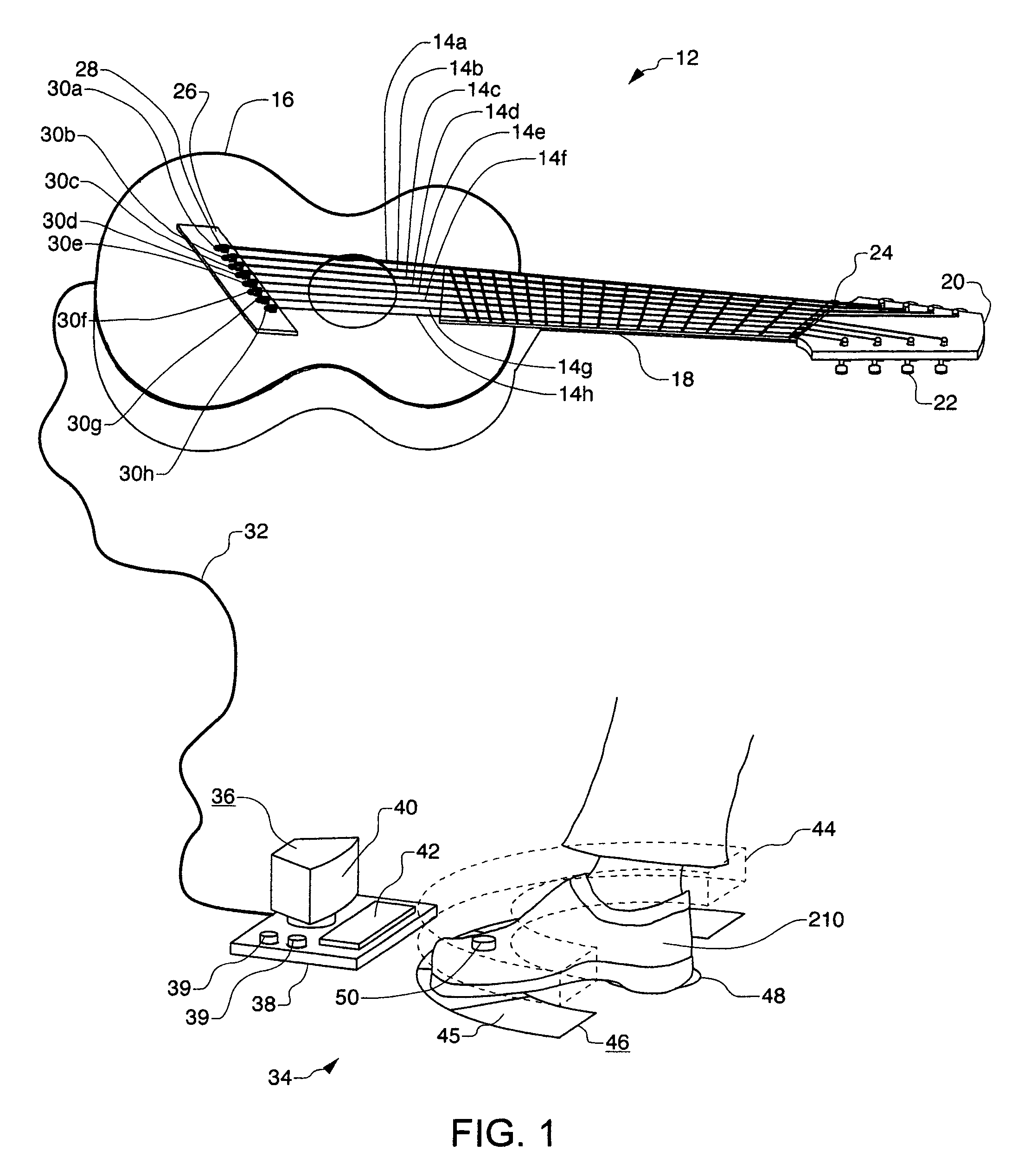Method and apparatus for string load reduction and real-time pitch alteration on stringed instruments
a real-time pitch alteration and load reduction technology, applied in stringed musical instruments, instruments, music aids, etc., can solve the problems of inability to re-tune a pitch in real-time, limit the number of combinations of chords and melodies, and standard techniques come with certain limitations, so as to reduce the load of strings and reduce the effect of load, rapid manipulation and load reduction
- Summary
- Abstract
- Description
- Claims
- Application Information
AI Technical Summary
Benefits of technology
Problems solved by technology
Method used
Image
Examples
first embodiment
Benefits
[0210]The above description of the first embodiment of the real-time pitch alteration system 10 of the present invention has described numerous benefits and advantages over prior art systems. A partial list of some benefits and advantages is provided here to help focus the discussion on some of the reasons why the first embodiment has been developed. The first embodiment of the real-time pitch alteration system 10 of the present invention:[0211](a) provides a simple, small, lightweight, low cost system for altering the pitch of strings 14 on a stringed instrument 12;[0212](b) provides a large jump in mechanical efficiency from prior art systems via a camming surface actuator 30 which combines the benefits of a variable ratio camming surface, a load optimization calculation, and a concave camming surface to maximize reduction ratio for a given size;[0213](c) works without sound dampening springs and therefore focuses the vibration of string 14 onto the instrument for enhancem...
second embodiment
Operation
[0240]Thus, the second embodiment provides a pitch alteration system 10 which comprises a motorized camming surface actuator 30 at one end of each string 14 and a hand-operated camming surface actuator 30 at the other end of each string 14. The basic operation, setup, tuning, pitch change operation 172 structure, and relative pitch functionality of the second embodiment are similar to the first embodiment. One difference is that the addition of computer 200 simplifies the electronics of control signal generator 34 and controller 52 thereby allowing those parts to be smaller, lighter, and less expensive. Computer 200 can also be optionally used to provide an improved graphical user interface for programming pitch change operations 172 and for displaying information about current pitch change operation 172 and control signal generator 34 setups. In one embodiment computer 200 provides a visual monitor for displaying the current functionality of specific active zones 34. For e...
third embodiment
Structure and Operation
[0248]Referring now to FIGS. 22 through 24, a third embodiment is provided for real-time pitch alteration system 10 which comprises a motorized actuation system 29 that is adapted for installation on the headstock 20 of a stringed instrument 12. This type of adaptation is particularly well-suited to instruments of the steel guitar family such as lap steels, pedal steels, and the like, though other stringed instruments are suitable as well. FIG. 22 shows a perspective view of the motorized actuation system 29 outfitted on a typical headstock 20. As shown in previous embodiments, each string 14, of which there are 6 in this case, is supported by a roller nut 204. Other types of low friction nuts such as a rocker nut, similar to rocker saddle 28, or other low friction slider type nuts are also suitable. As long as the nut supports string 14 as required for proper string length and minimizes nonlinear stick-slip friction effects, then it will be suitable for use w...
PUM
 Login to View More
Login to View More Abstract
Description
Claims
Application Information
 Login to View More
Login to View More - R&D
- Intellectual Property
- Life Sciences
- Materials
- Tech Scout
- Unparalleled Data Quality
- Higher Quality Content
- 60% Fewer Hallucinations
Browse by: Latest US Patents, China's latest patents, Technical Efficacy Thesaurus, Application Domain, Technology Topic, Popular Technical Reports.
© 2025 PatSnap. All rights reserved.Legal|Privacy policy|Modern Slavery Act Transparency Statement|Sitemap|About US| Contact US: help@patsnap.com



